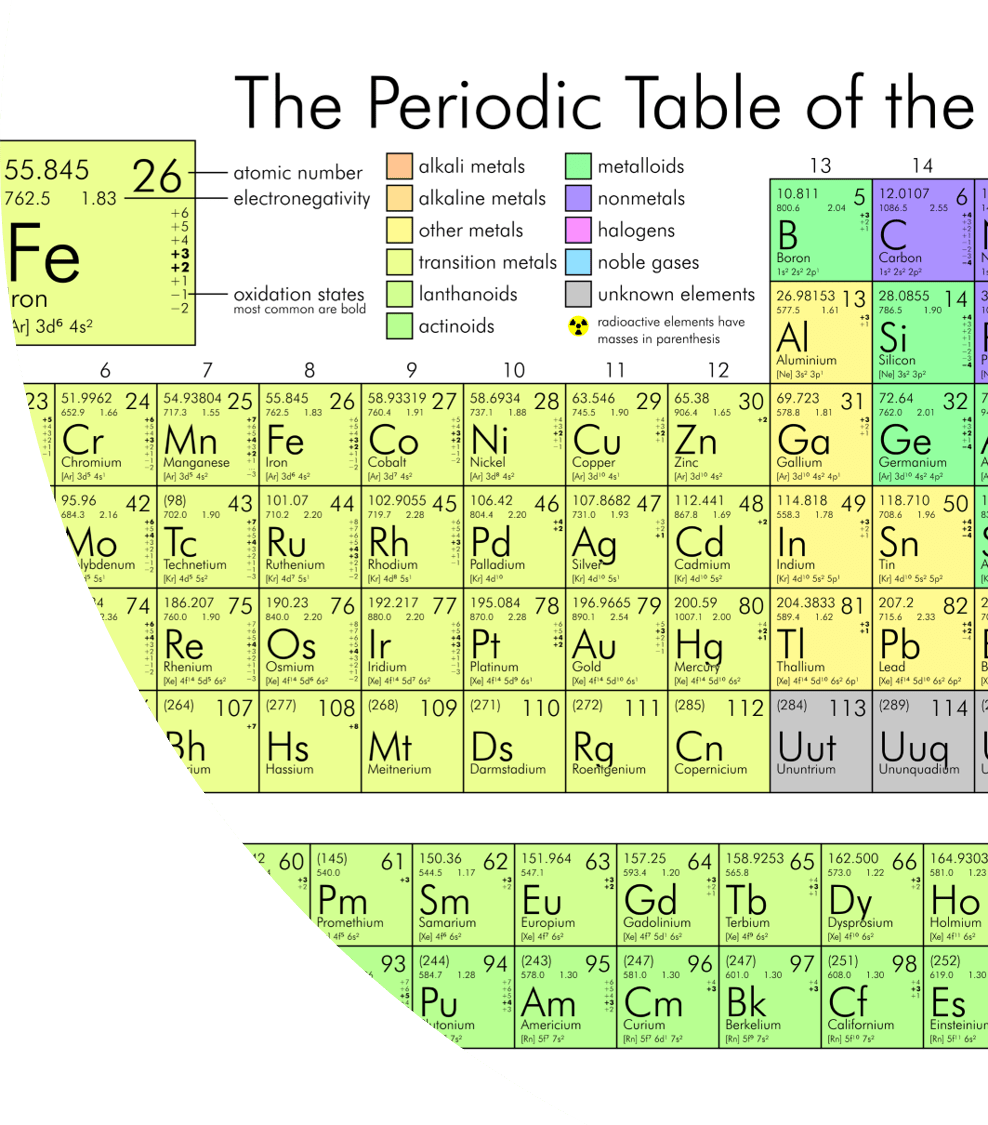The original periodic table was created by Dmitri Mendeleev in 1869. Dmitri Mendeleev was a Russian chemist and inventor. At the time there were only 58 known elements, in comparison to today’s 118, so his exact periodic table varies from the modern day one but Mendeleev adjusted and left gaps for unknown elements.
He looked at the properties of the elements and sorted them into groups, each group had rows and from there he noticed gaps. The modern day periodic table uses the same ordering system as Mendeleev’s.
How is the modern periodic table organized?
The modern periodic table is organized using electronic structure.
Each group symbolizes the number of electron in the outer shell of the element.
Each period (horizontal row) tells you how the layers of electrons are ordered in the atom of an element.
e.g. Potassium(K) has 19 electrons. It is also in group 1 and on the 4th row. This means it has 1 outer shell electron and the shells are ordered- 2,8,8,1.

How this helps us predict properties
Elements in the same group have very similar properties and react in a very similar way with other elements or substances. This is because they all have the same number of outer shell electrons. Elements react better with elements that can get them close to or to 8 outer shell electrons, this is because they are more stable with a full outer shell.
Below is a video showing a reaction between chlorine(gas) and potassium(solid). The test tube is heated and a violent reaction occurs. Potassium has 1 outer shell electron whereas chlorine has 7, as we know 1 + 7 = 8. This is why they react quite violently.

Artificially created elements
Artificial elements are elements created by scientists. They have been around for quite a while. Technetium was the first created. This was in 1937. There are quite a lot of them too. Of the 118 elements in the periodic table 92 are naturally formed and the remaining 26 are synthetic.
What is a particle accelerator?
A particle accelerator is a machine that propels particles towards each other to create other particles.
This is how scientists create synthetic elements.
The particles are sped up and slowed down by an electric field.
The particles are steered and focused by magnetic fields in the accelerator.
The particles are sent through a vacuum inside a metal pipe.
There are more than 30,000 particle accelerators in the world, ranging from the smallest, less than 30cm long, to the largest –the Hadron Collider- which is 27km long.

How are synthetic elements created?
- In a particle accelerator (shown on the left) two particle of different elements collide at a very high speed
- Because the particles have some mass, they cannot travel at the speed of light but can travel at 0.99997 x the speed of light.
- When the particles collide protons smash off and combine with the other particles.
- The first 5 synthetic elements, atomic number 95-100, were created by smashing Uranium with neutrons and waiting until the impregnated nucleus converts the extra neutron into an electron, proton and antineutrino.
- After atomic number 100, fermium, they began colliding elements together. They started with hydrogen (AM 2) and einsteinium(AM 99) to make mendelevium(AM 101). What happened was the nuclei of the two elements was fusing to create one giant nucleus.
- This creates new combinations of protons/electrons/neutrons and henceforth a new element
Why do they create new elements?
- Scientists create new elements as they may have a use that we don’t know about yet.
- Many elements throughout history have been disregarded, but as we learned more about them, we realized they have incredibly important uses.
- As many of the synthetic elements are too radioactive they cannot be used in everyday ways.
- Apart from Americium which is used in a lot of smoke detectors, Americium has a half-life of about 430 years so it can be sustainably used.
How are they named?
- Many newer elements are not named yet as they have not come up with a name yet.
- For example ununoctium, which is just an alternative way of saying 118.
- The names of many elements vary from language to language depending on what that country decides to call the element.
- The chemical symbols vary as well with different alphabets
Examples of name choices
- Berkelium – discovered in the town of Berkeley.
- Promethium – named after Prometheus.
- Curium – named after Marie Curie.
- Einsteinium – named after Albert Einstein.
- Nobelium – named after Alfred Nobel.
- Hassium – named for the German state Hessen.
- Seaborgium – named after Influential Chemist Glenn Seaborg.
- Neptunium – named after Neptune.
- Plutonium – named after Pluto.
- Fermium was named after Nobel Laureate Enrico Fermi.

